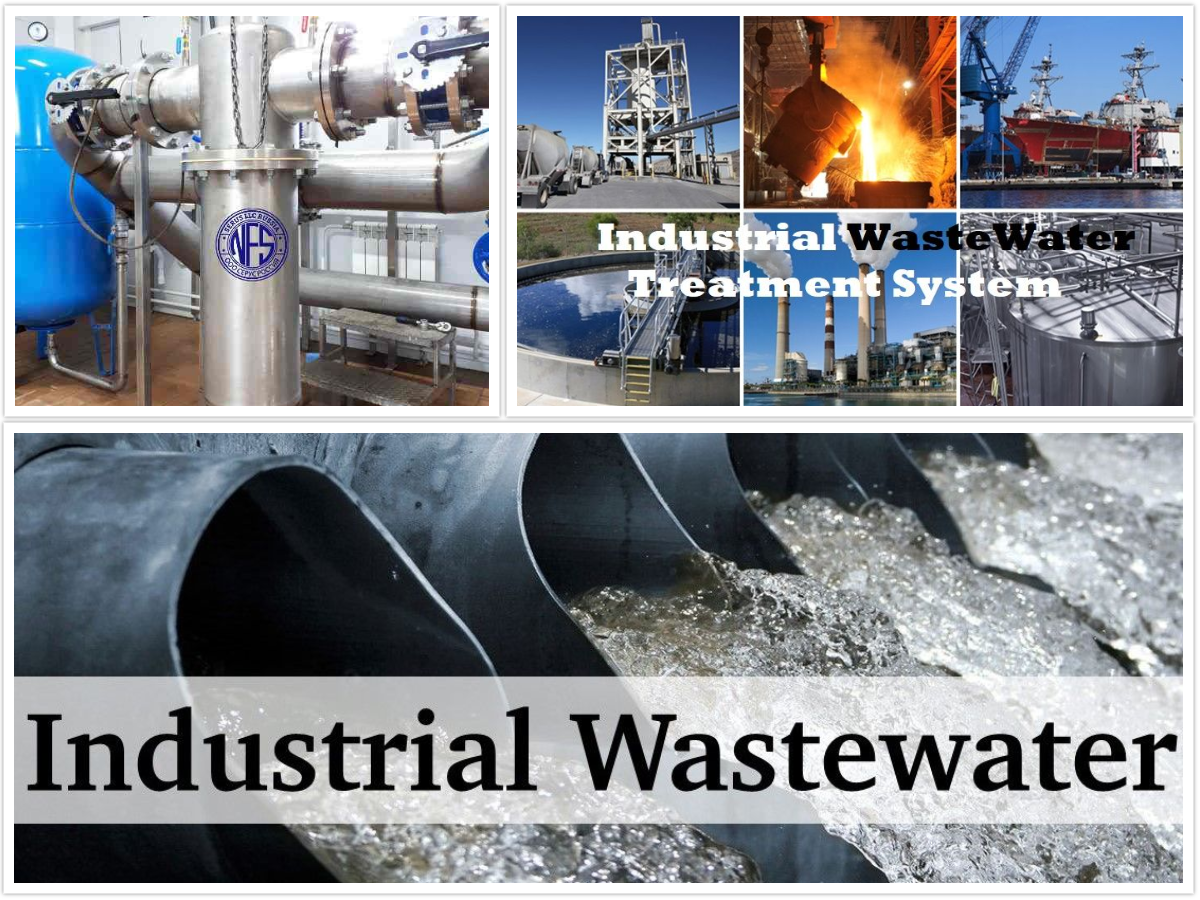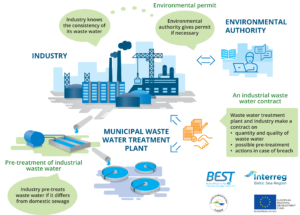Industrial Waste Water Treatment-- Safeguard the Atmosphere with Expert Water Treatment Services
Industrial Waste Water Treatment-- Safeguard the Atmosphere with Expert Water Treatment Services
Blog Article
Technologies and Advances in Industrial Waste Water Treatment Technologies
The landscape of industrial wastewater therapy is going through a transformative change, driven by innovations that boost both effectiveness and sustainability. Emerging innovations, such as membrane layer bioreactors and microbial gas cells, are redefining contaminant elimination processes while adding to energy generation. Additionally, source healing approaches are acquiring traction, aligning with round economic climate concepts. As governing requirements advance, the integration of AI and artificial intelligence into wastewater monitoring systems promises to improve operations and make certain conformity. However, the full ramifications of these innovations raise critical concerns concerning their scalability and lasting influence on industry practices.
Overview of Drainage Therapy Technologies
Wastewater therapy innovations include a series of methods designed to get rid of impurities from commercial effluents before their release right into the atmosphere. These innovations are crucial for maintaining eco-friendly equilibrium and guaranteeing compliance with ecological guidelines. The primary groups of wastewater therapy include physical, chemical, and organic techniques, each serving distinctive functions based on the nature of the impurities present.

Organic treatment methods utilize microbes to degrade raw material, making them especially reliable for organic-rich effluents. Strategies like activated sludge and biofilm reactors harness the natural deterioration abilities of germs, bring about substantial reductions in biochemical oxygen demand (BOD)
Advanced Filtration Techniques
Advanced filtering methods represent an essential advancement in the world of commercial wastewater therapy, boosting the performance of impurity elimination procedures. Industrial Waste Water Treatment. These approaches incorporate a variety of modern technologies, consisting of microfiltration, ultrafiltration, nanofiltration, and turn around osmosis, which supply consecutive barriers for various particle sizes and chemical structures
Microfiltration and ultrafiltration make use of membrane layer systems to get rid of put on hold solids, germs, and larger organic particles, boosting the high quality of effluent before further treatment. Nanofiltration links the void in between ultrafiltration and reverse osmosis, efficiently removing organic compounds and divalent ions, thus decreasing the lots on downstream procedures.
Reverse osmosis provides the highest possible level of filtration by enabling just water and little molecules to travel through its semi-permeable membrane layers, making it ideal for recovering top quality water from commercial effluents. Recent improvements in membrane layer technology, including the growth of even more long lasting and fouling-resistant products, have dramatically improved functional performance and lowered prices.
Integrating these advanced purification strategies not only boosts the general treatment process however also adds to sustainability efforts by making it possible for water reuse and source healing in commercial settings. (Industrial Waste Water Treatment)
Organic Therapy Advancements

Furthermore, the advancement of engineered biological systems, such as membrane bioreactors (MBRs), combines biological treatment with sophisticated membrane layer filtering. This assimilation permits greater effluent quality and minimized footprint, making it ideal for space-constrained commercial facilities. Innovations in genetically crafted microorganisms have actually likewise emerged, boosting the biodegradation of details pollutants, such as pharmaceuticals and heavy metals, that are generally challenging to eliminate.
In addition, the application of bioaugmentation methods, where advantageous germs are introduced to boost the existing biological treatment procedures, has revealed promising lead to improving therapy efficiency. These advancements collectively symbolize a trend in the direction of even more sustainable and effective biological treatment approaches that can adjust to the developing complexities of commercial wastewater streams. As sectors remain to prioritize ecological conformity, these organic developments will certainly play an important role in wastewater monitoring.

Source Recovery Approaches
In commercial setups, the combination of source recuperation techniques has actually become progressively essential for improving sustainability and decreasing waste. These methods focus on extracting useful products and energy from wastewater streams, consequently changing prospective contaminants into recyclable sources.
One popular strategy is nutrition healing, website link where nitrogen and phosphorus, often existing over in wastewater, are recorded and exchanged fertilizers. This not only minimizes environmental impacts however also gives a circular economic climate solution for farming applications. In addition, innovations such as anaerobic food digestion enable the conversion of organic waste into biogas, a renewable resource source that can counter fossil fuel use in industrial procedures.
Furthermore, progressed purification and membrane modern technologies facilitate the recovery of commercial byproducts such as salts and steels. These recovered products can be reintegrated right into manufacturing procedures, minimizing the need for virgin resources.
Future Trends in Drainage Management
As sectors progressively focus on sustainability, the future of wastewater monitoring is set to undertake substantial changes. Technological advancements, such as expert system and device learning, will certainly allow extra effective monitoring and administration of wastewater systems. These innovations can anticipate maintenance needs, optimize therapy procedures, and enhance decision-making, eventually lowering functional expenses and environmental effect.
Additionally, the integration of circular economic situation concepts will certainly play a crucial role in wastewater management. Industries are expected to shift in the direction of systems Check Out Your URL that not only deal with wastewater yet also recover useful resources, such as nutrients, water, and power. This transition will reduce waste and advertise the reuse of materials, straightening with global sustainability objectives.
Arising treatment strategies, such as membrane bioreactors and advanced oxidation processes, will better boost the efficiency of wastewater therapy, enabling higher quality effluents suitable for reuse. Additionally, regulative frameworks are most likely to advance, highlighting more stringent standards for wastewater discharge and encouraging industries to adopt innovative therapy services.
Final Thought
To conclude, the evolution of commercial wastewater treatment innovations demonstrates a considerable shift in the direction of enhanced efficiency and sustainability. Advancements in sophisticated filtration techniques, biological therapies, and resource healing methods highlight the industry's dedication to ecological stewardship. The integration of expert system and artificial intelligence even more enhances these procedures, ensuring governing compliance and advertising a circular economic situation. Proceeded improvements in these locations will certainly play a vital role in forming the future of wastewater monitoring and securing essential water resources.
The landscape of industrial wastewater treatment is undertaking a transformative change, driven by innovations that boost both efficiency and sustainability.Wastewater therapy innovations encompass a range of techniques developed to get rid of pollutants from industrial effluents before their launch right into the setting.Utilizing the power of organic procedures has led to considerable technologies in the treatment of commercial wastewater.Furthermore, the execution of bioaugmentation techniques, where advantageous germs are presented to boost the existing biological treatment procedures, has actually revealed appealing outcomes in improving treatment performance. These advancements jointly symbolize a trend towards even more efficient and lasting organic therapy approaches that can adjust to the advancing intricacies of commercial wastewater streams.
Report this page